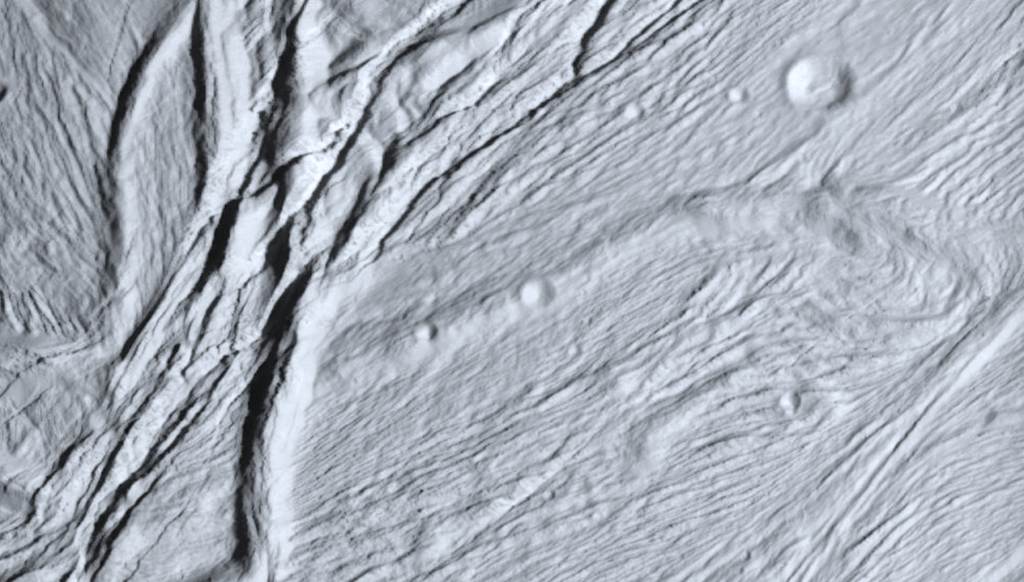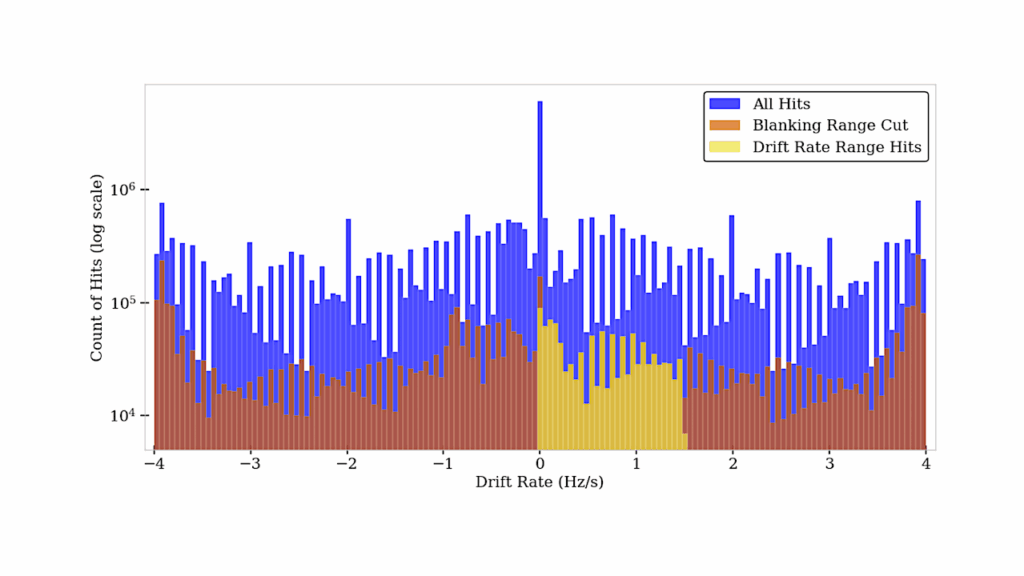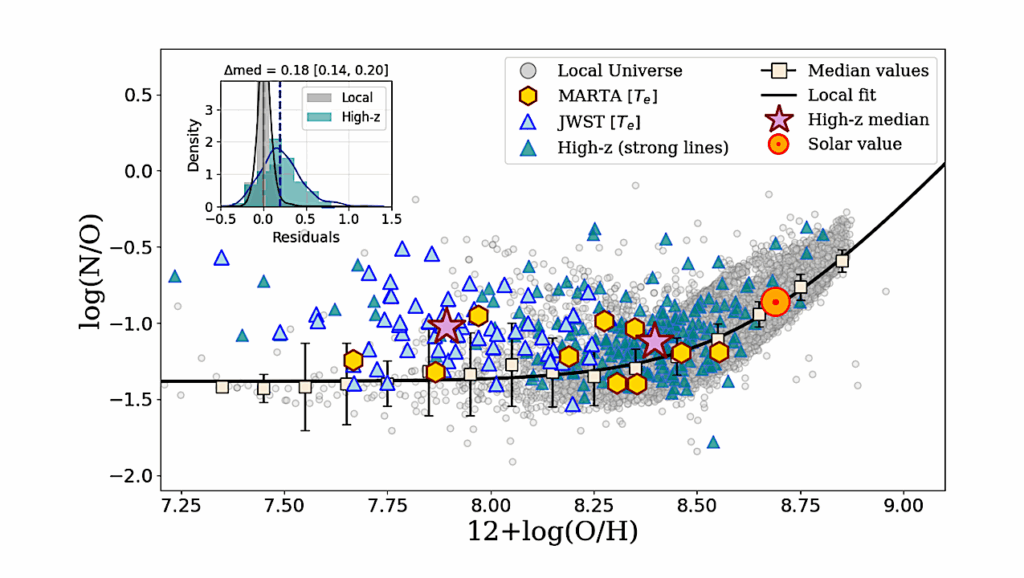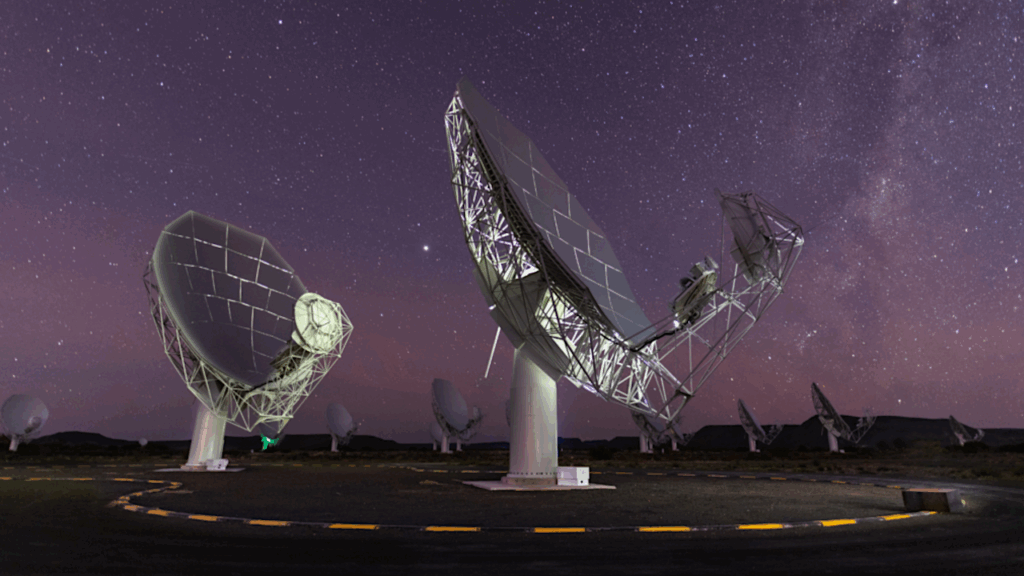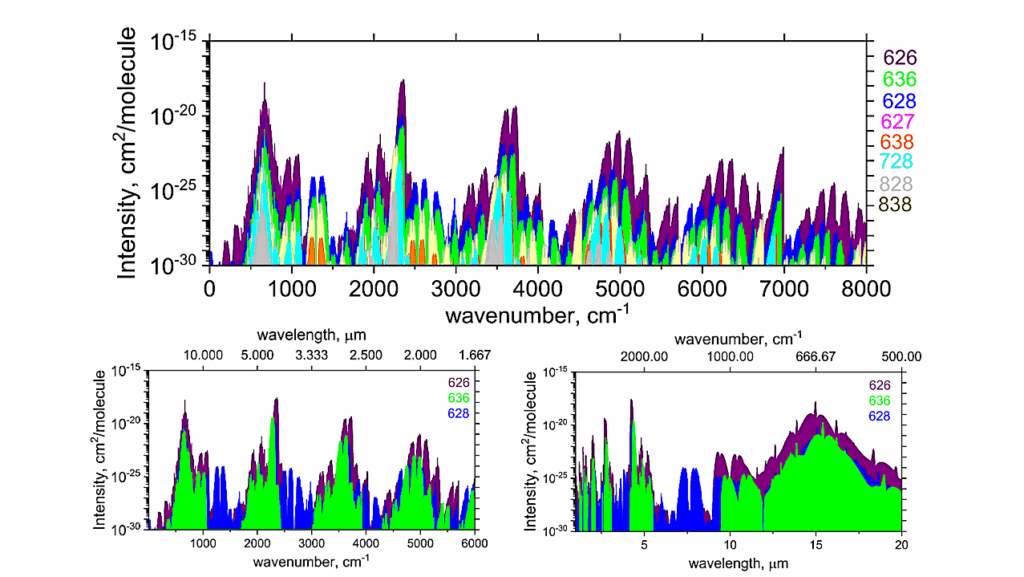The Molecular Composition Of Shadowed Protosolar Disk Midplanes Beyond The Water Snowline

Image: Pie charts of the percentage contributions of the dominant carbon-bearing molecules to the total elemental carbon abundance (= 1.4 × 10−4 , top panels), the dominant oxygen-bearing molecules to the total elemental oxygen abundance (= 3.2×10−4 , middle panels), and the dominant nitrogen-bearing molecules to the total elemental nitrogen abundance (= 7.5×10−5 , bottom panels), at r =5.3 au (around the current orbit of Jupiter) and t=106 years. The left panels show the contributions for the disk midplane with the monotonically decreasing density and temperature profile (f = 1.0), whereas the right panel shows the contributions for the shadowed disk midplane (f = 0.03). These panels show the results for molecular initial abundances (the “inheritance” scenario) and ξCR(r) =1.0 × 10−17 [s−1 ]. The filled and hatched slices are respectively the contributions of gaseous and icy molecules. [Top panels]: The dark blue, red, black, purple, green, orange, yellow, and light blue slices are respectively the contributions of CO2 ice, CO ice, CO gas, H2CO ice, CH4 ice, HCN ice, C2H6 ice, and other molecules (such as NH2CHO ice and CH3OH ice for f = 0.03, and CH3CCH ice, CH2CCH2 ice, and CH3CHCH2 ice for f = 1.0). [Middle panels]: The dark blue, red, black, purple, green, and light blue slices are respectively the contributions of CO2 ice, CO ice, CO gas, H2CO ice, H2O ice, and other molecules (such as NH2CHO ice and CH3OH ice). [Bottom panels]: The dark blue, red, black, purple, green, orange, and light blue slices are respectively the contributions of N2 gas, N2 ice, NH3 ice, NH2CHO ice, NH2OH ice, HCN ice, and other molecules (such as HC3N ice).
The disk midplane temperature is potentially affected by the dust traps/rings. The dust depletion beyond the water snowline will cast a shadow.
In this study, we adopt a detailed gas-grain chemical reaction network, and investigate the radial gas and ice abundance distributions of dominant carbon-, oxygen-, and nitrogen-bearing molecules in disks with shadow structures beyond the water snowline around a protosolar-like star.
In shadowed disks, the dust grains at around 3−8 au are predicted to have more than around 5−10 times amounts of ices of organic molecules such as H2CO, CH3OH, and NH2CHO, saturated hydrocarbon ices such as CH4 and C2H6, in addition to H2O, CO, CO2, NH3, N2, and HCN ices, compared with those in non-shadowed disks.
In the shadowed regions, we find that hydrogenation (especially of CO ice) is the dominant formation mechanism of complex organic molecules. The gas-phase N/O ratios show much larger spatial variations than the gas-phase C/O ratios, thus the N/O ratio is predicted to be a useful tracer of the shadowed region. N2H+ line emission is a potential tracer of the shadowed region.
We conclude that a shadowed region allows the recondensation of key volatiles onto dust grains, provides a region of chemical enrichment of ices that is much closer to the star than within a non-shadowed disk, and may explain to some degree the trapping of O2 ice in dust grains that formed comet 67P/Churyumov-Gerasimenko. We discuss that, if formed in a shadowed disk, Jupiter does not need to have migrated vast distances.
Shota Notsu, Kazumasa Ohno, Takahiro Ueda, Catherine Walsh, Christian Eistrup, Hideko Nomura
Comments: 52 pages, 22 Figures, 2 Tables, Accepted for publication in The Astrophysical Journal (ApJ) on August 7th, 2022
Subjects: Earth and Planetary Astrophysics (astro-ph.EP); Astrophysics of Galaxies (astro-ph.GA); Solar and Stellar Astrophysics (astro-ph.SR)
Cite as: arXiv:2208.06005 [astro-ph.EP] (or arXiv:2208.06005v1 [astro-ph.EP] for this version)
Submission history
From: Shota Notsu
[v1] Thu, 11 Aug 2022 18:37:02 UTC (1,558 KB)
Full paper: https://arxiv.org/abs/2208.06005
Astrobiology, Astrochemistry


